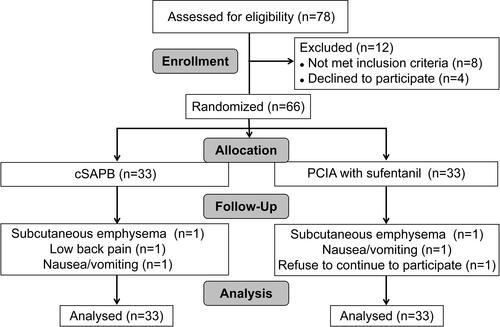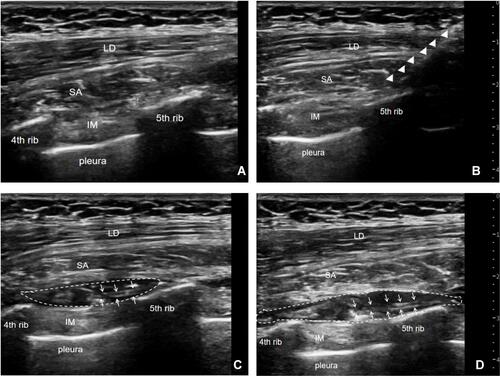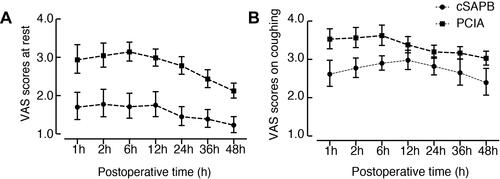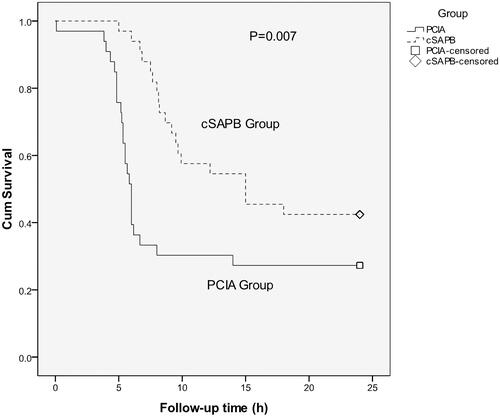Figures & data
Figure 1 Flow chart of study.
Notes: Seventy-eight patients were initially assessed prior to surgical operation. Sixty-six patients were enrolled in the present study. During the follow-up to 48 hours after surgery, six patients were excluded because of subcutaneous emphysema postoperatively, low back pain occurred with a history of urinary stone disease, withdrawal as unacceptable nausea/vomiting, refusal of continuing to participation. Finally, data of a total of 66 patients were collected for statistical analysis.
Abbreviations: cSAPB, continuous serratus anterior plane block; PCIA, patient-controlled intravenous analgesia.

Figure 2 Ultrasound-guided cSAPB with placement of catheter. (A) The serratus anterior was above the 4th and 5th ribs and below the latissimus dorsi. (B) The needle indicated by the triangular arrow passed through the latissimus dorsi and serratus anterior, and arrived at the surface of the 5th rib. (C) The catheter indicated by the arrow was inside the serratus anterior muscle plane, surrounded by the drug solution. (D) Over time, the drug distributed adequately into the fascial plane between the serratus anterior muscle and the external intercostal muscle.
Abbreviations: LD, latissimus dorsi; SA, serratus anterior; IM, intercostal muscle.

Figure 3 VAS scores at rest (A) and on coughing (B) in cSAPB and PCIA groups.
Note: Lines represent 95% confidence intervals.
Abbreviations: VAS, visual analog scale; cSAPB, continuous serratus anterior plane block; PCIA, patient-controlled intravenous analgesia.

Figure 4 Survival curve of time to first patients-controlled bolus in cSAPB and PCIA groups.
Note: There was a statistical difference with the time to first bolus between two groups (P=0.007).
Abbreviations: cSAPB, continuous serratus anterior plane block; PCIA, patient-controlled intravenous analgesia.

Table 1 Demographic and Surgical Characteristics of Participating Patients (n=66)
Table 2 Outcomes Regarding Pain Management of Patients (n=66)
Table 3 Other Secondary Outcomes of Patients (n=66)
